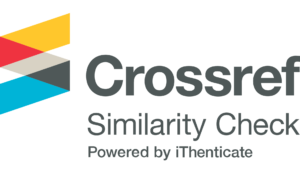Conservation Journal
"An International Journal Devoted to Conservation of Environment"
(A PEER REVIEWED JOURNAL)
ISSN: 2278-5124 (Online) :: ISSN: 0972-3099 (Print)





"An International Journal Devoted to Conservation of Environment"
(A PEER REVIEWED JOURNAL)
ISSN: 2278-5124 (Online) :: ISSN: 0972-3099 (Print)
"An International Journal Devoted to Conservation of Environment"
(A PEER REVIEWED JOURNAL)
ISSN: 2278-5124 (Online) :: ISSN: 0972-3099 (Print)
"An International Journal Devoted to Conservation of Environment"
(A PEER REVIEWED JOURNAL)
ISSN: 2278-5124 (Online) :: ISSN: 0972-3099 (Print)
"An International Journal Devoted to Conservation of Environment"
(A PEER REVIEWED JOURNAL)
ISSN: 2278-5124 (Online) :: ISSN: 0972-3099 (Print)
"An International Journal Devoted to Conservation of Environment"
(A PEER REVIEWED JOURNAL)
ISSN: 2278-5124 (Online) :: ISSN: 0972-3099 (Print)
 Plagiarism is intentionally using someone else’s ideas or other original material as if they are one’s own. Plagiarism is a serious violation of publication ethics. Environment Conservation Journal is very much conscious about preventing the Plagiarism. All manuscripts under review or published with Environment Conservation Journal are subject to screening using plagiarism prevention software. Environment Conservation Journal never considers the manuscripts for publication which comes under the plagiarism. Plagiarism is not always intentional and is mostly due to lack of knowledge and awareness. Plagiarism can also occur accidentally when an author does not intend to plagiarize, but fails to cite his or her sources correctly and completely. Being careful and having clear understanding of ethical writing can help to prevent this. It is the sole responsibility of author that published data, unpublished data must be properly credited and the appropriate permission has been sought from the competent authority. Author(s) working on endangered or banned biota is required to submit a certificate that He/She has got proper permission for working on such animals or plants. If a case of plagiarism comes to knowledge after a paper is published in the journal, the journal will conduct proper investigation. We give a fair chance to authors to correct and amend their work if significant similarity indexed is observed. We use state of the art plagiarism tools: Similarity Check by iThenticate to check every section of the manuscript. If the similarity is index is more than 10% we ask the authors to revise the manuscript. Also The Editors and ASEA assume no responsibility for the originality/views expressed by the authors of the articles/papers published in Environment Conservation Journal.
Plagiarism is intentionally using someone else’s ideas or other original material as if they are one’s own. Plagiarism is a serious violation of publication ethics. Environment Conservation Journal is very much conscious about preventing the Plagiarism. All manuscripts under review or published with Environment Conservation Journal are subject to screening using plagiarism prevention software. Environment Conservation Journal never considers the manuscripts for publication which comes under the plagiarism. Plagiarism is not always intentional and is mostly due to lack of knowledge and awareness. Plagiarism can also occur accidentally when an author does not intend to plagiarize, but fails to cite his or her sources correctly and completely. Being careful and having clear understanding of ethical writing can help to prevent this. It is the sole responsibility of author that published data, unpublished data must be properly credited and the appropriate permission has been sought from the competent authority. Author(s) working on endangered or banned biota is required to submit a certificate that He/She has got proper permission for working on such animals or plants. If a case of plagiarism comes to knowledge after a paper is published in the journal, the journal will conduct proper investigation. We give a fair chance to authors to correct and amend their work if significant similarity indexed is observed. We use state of the art plagiarism tools: Similarity Check by iThenticate to check every section of the manuscript. If the similarity is index is more than 10% we ask the authors to revise the manuscript. Also The Editors and ASEA assume no responsibility for the originality/views expressed by the authors of the articles/papers published in Environment Conservation Journal.
